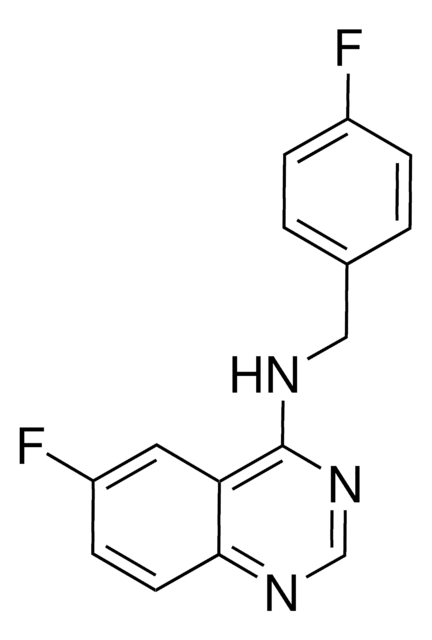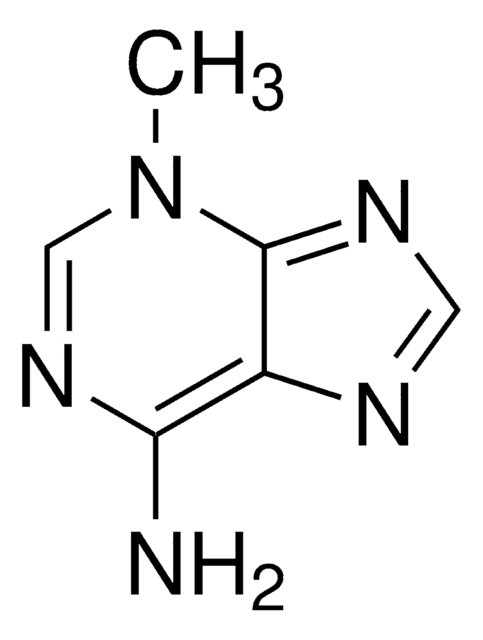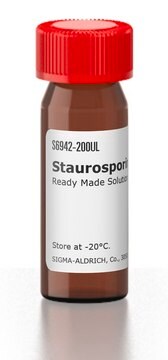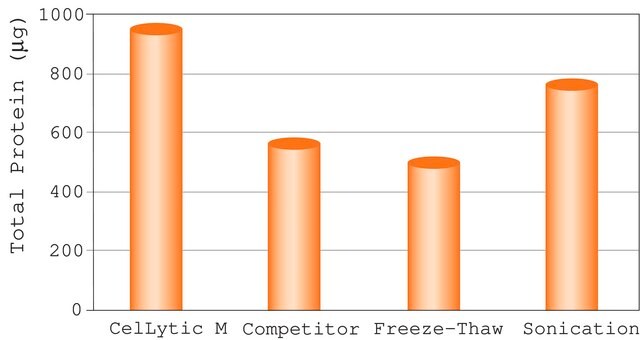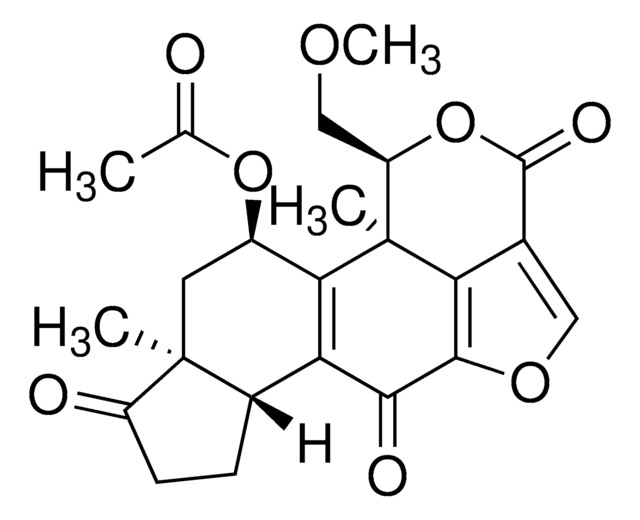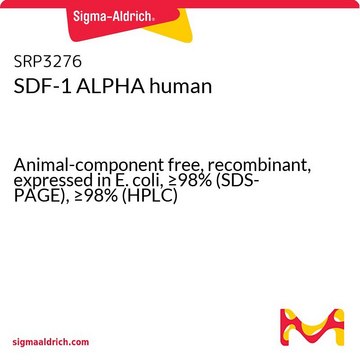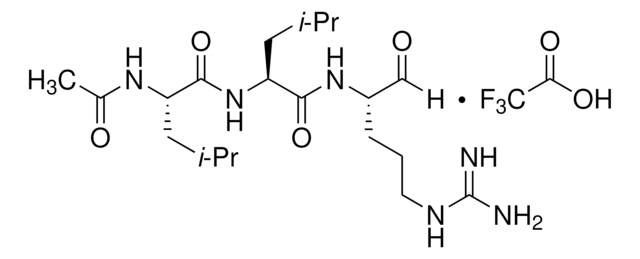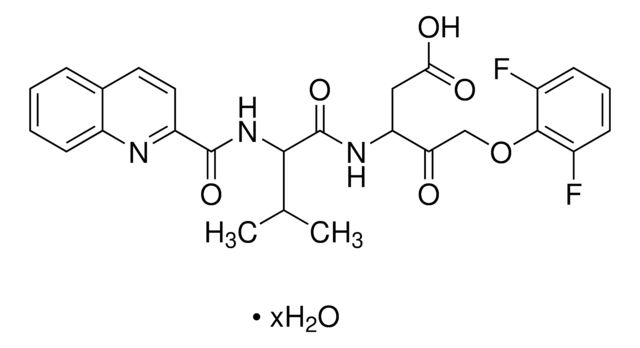SML0440
Spautin-1
≥98% (HPLC)
Sinónimos:
6-Fluoro-N-[(4-fluorophenyl)methyl]-4-quinazolinamine, C43
About This Item
Productos recomendados
Nivel de calidad
Ensayo
≥98% (HPLC)
Formulario
powder
color
white to beige
solubilidad
DMSO: 15 mg/mL (clear solution)
temp. de almacenamiento
2-8°C
cadena SMILES
FC1=CC=C(C=C1)CNC2=C3C=C(F)C=CC3=NC=N2
InChI
1S/C15H11F2N3/c16-11-3-1-10(2-4-11)8-18-15-13-7-12(17)5-6-14(13)19-9-20-15/h1-7,9H,8H2,(H,18,19,20)
Clave InChI
AWIVHRPYFSSVOG-UHFFFAOYSA-N
Aplicación
- to study its effects on vascular, glial, and neuronal alterations in the oxygen-induced retinopathy mouse model
- to evaluate its pre-treatment effect on the response of canine osteosarcoma cells to doxorubicin
- to study its effects on the production of interleukin (IL)-6 by oxidatively stressed dendritic cells (OS-DCs) in Luminex assay
Acciones bioquímicas o fisiológicas
Palabra de señalización
Danger
Frases de peligro
Consejos de prudencia
Clasificaciones de peligro
Acute Tox. 4 Oral - Eye Dam. 1
Código de clase de almacenamiento
11 - Combustible Solids
Clase de riesgo para el agua (WGK)
WGK 3
Punto de inflamabilidad (°F)
Not applicable
Punto de inflamabilidad (°C)
Not applicable
Elija entre una de las versiones más recientes:
Certificados de análisis (COA)
¿No ve la versión correcta?
Si necesita una versión concreta, puede buscar un certificado específico por el número de lote.
¿Ya tiene este producto?
Encuentre la documentación para los productos que ha comprado recientemente en la Biblioteca de documentos.
Los clientes también vieron
Nuestro equipo de científicos tiene experiencia en todas las áreas de investigación: Ciencias de la vida, Ciencia de los materiales, Síntesis química, Cromatografía, Analítica y muchas otras.
Póngase en contacto con el Servicio técnico
